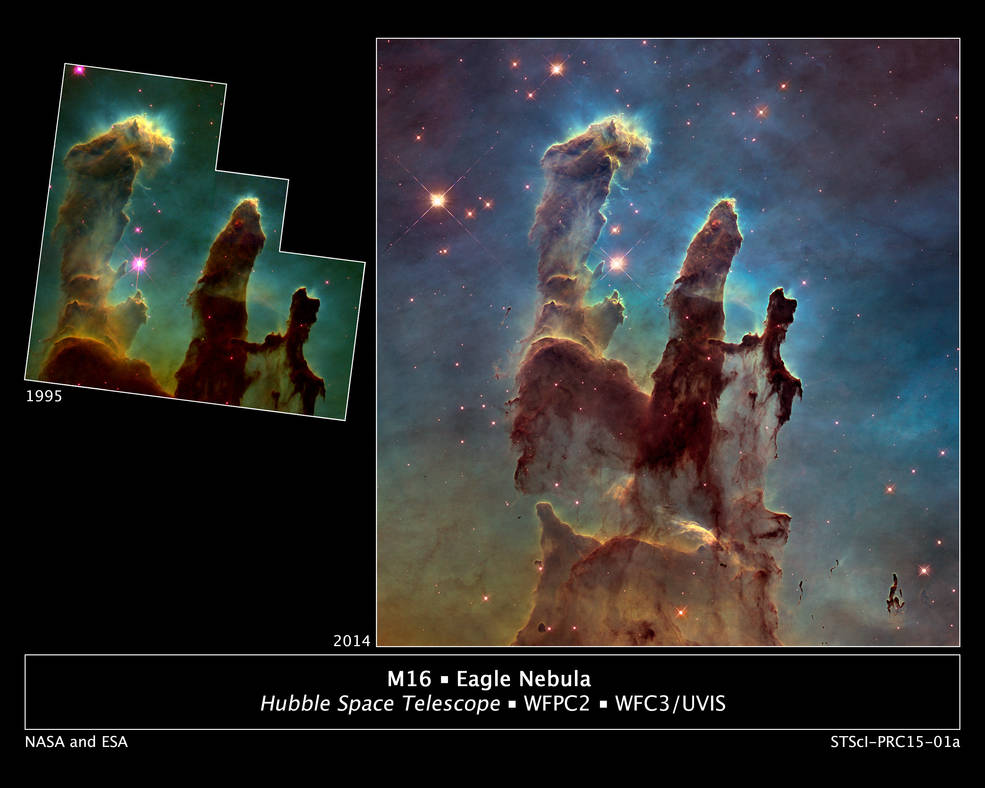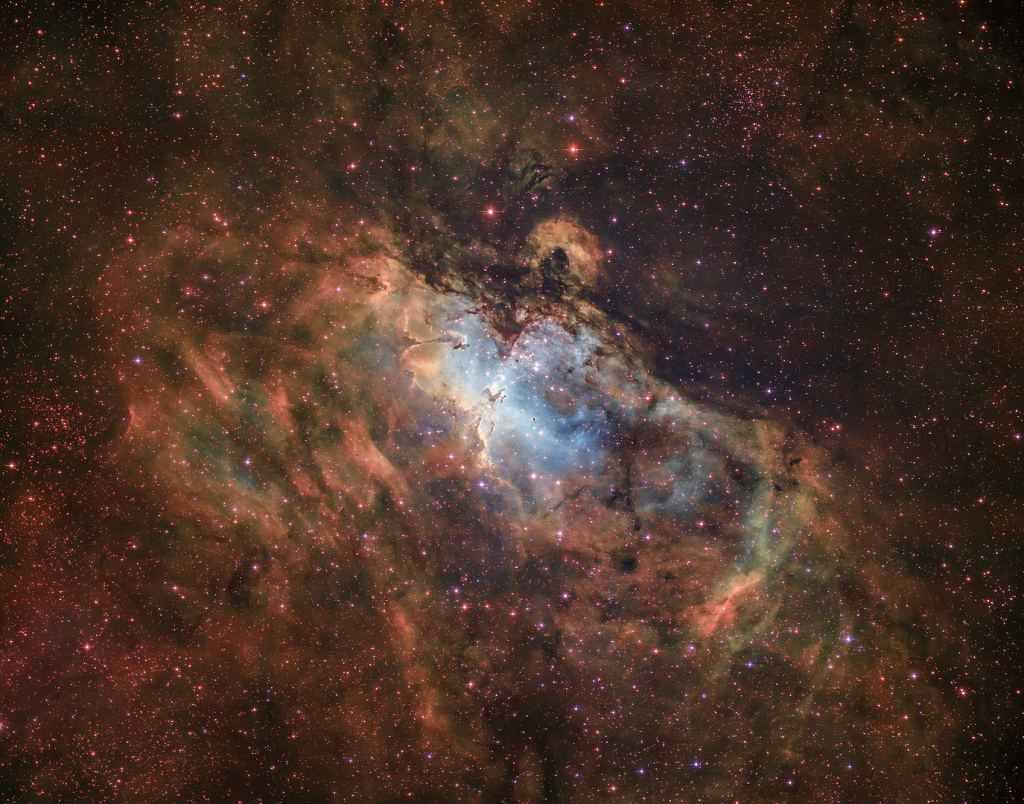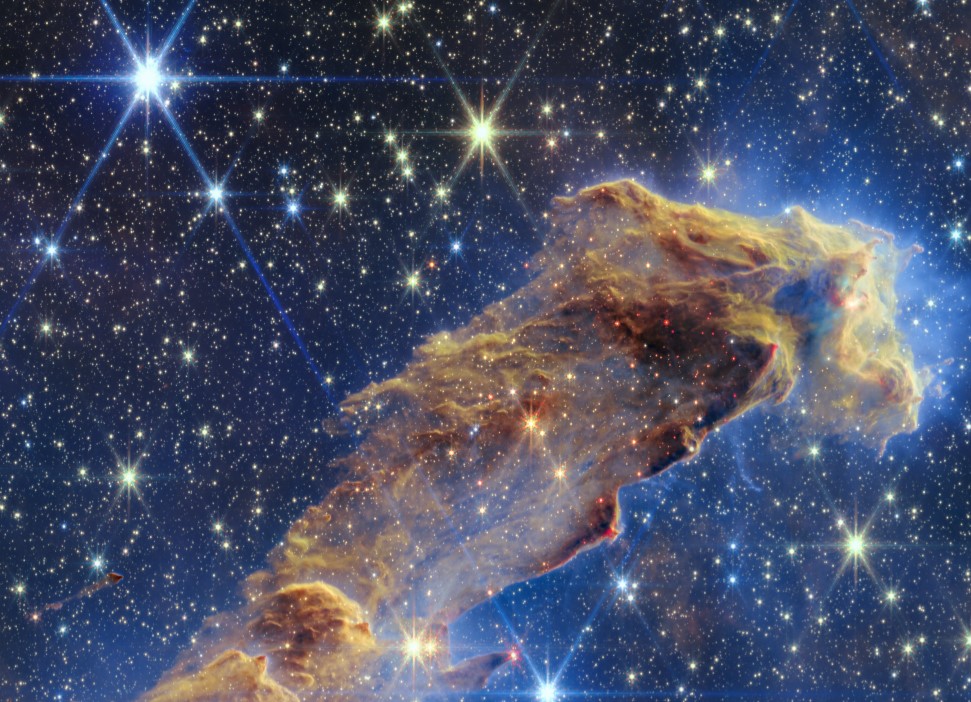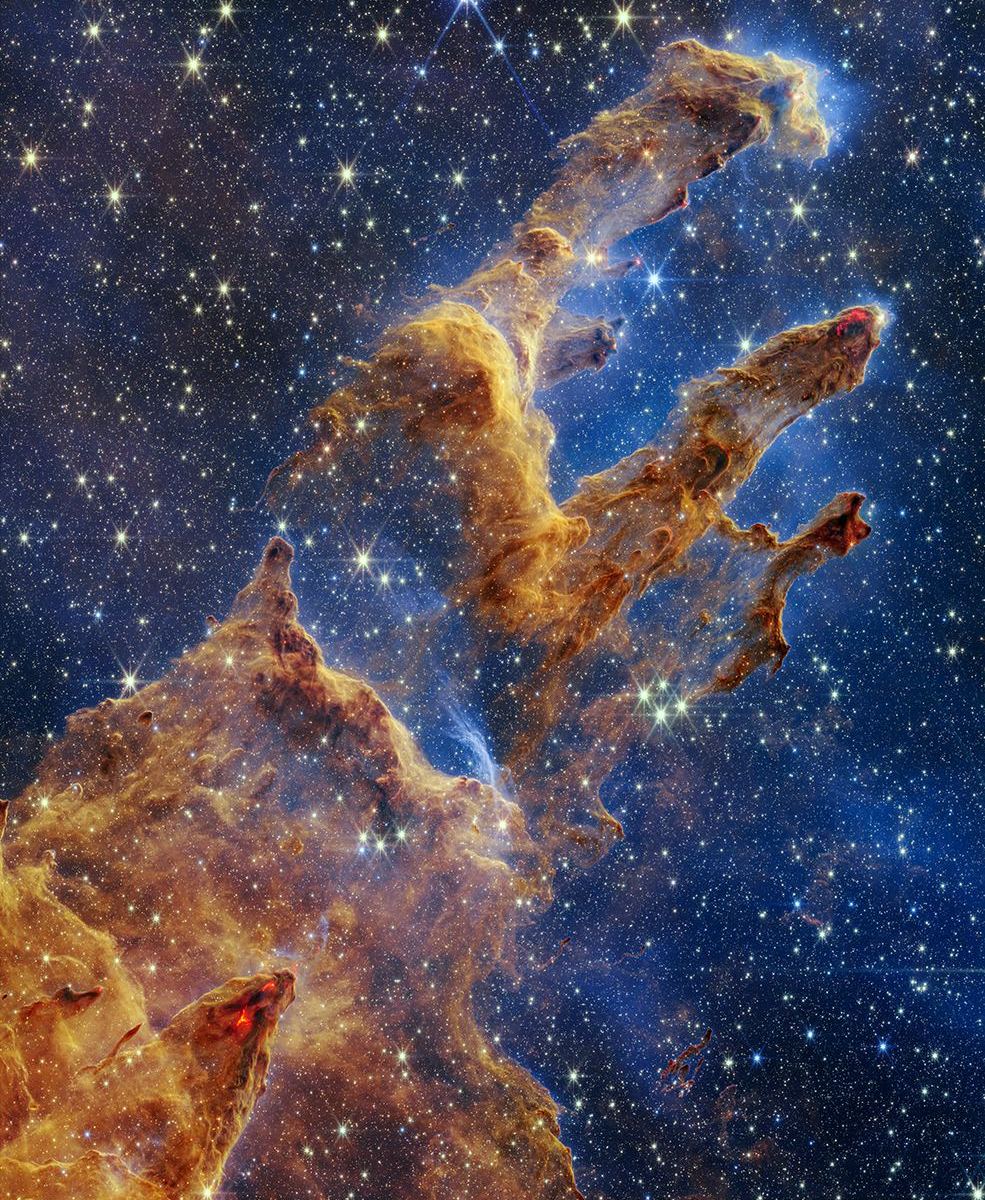The James Webb Space Telescope is living up to expectations. When it was launched, NASA Administrator Bill Nelson said it would “… open up secrets of the universe that will be just stupendous, if not almost overwhelming.” Nelson’s statement rings true a few months into the telescope’s multi-year mission.
We’ve never seen the Pillars of Creation like this before.
We were amazed when the Hubble Space Telescope fed us a stream of images back in the 1990s. It was revolutionary, and as the internet became more prominent through the mid-90s, Hubble images became iconic. The Hubble imaged the Pillars of Creation more than once, and the improvements in the telescope show up in pictures separated by nearly two decades.

Hubble’s image of the Pillars of Creation is one of the most iconic images of all, maybe the most well-known. But the James Webb Telescope has outdone the Hubble. The crisp detail in the JWST image is undeniably captivating. (For an even better look, download the 150 MB version.)
The Pillars of Creation are in the Eagle Nebula (M16.) It’s about 5700 light-years away in the Milky Way’s Sagittarius Arm. There are active star-forming regions in the nebula, and the blistering light from hot young stars is carving cavities out of the gas and dust.

This outstanding Webb image of the Pillars is more than just an image. It has scientific value. The clarity and detail allow astronomers to gather more precise counts of newly-formed stars, which will feed into better models. Astronomers will also be able to measure the quantities of gas and dust more accurately than before, which will help “… build a clearer understanding of how stars form and burst out of these dusty clouds over millions of years,” as a NASA press release explains.

The Pillars are a massive collection of dust and gas where new stars are actively forming. As young stars form, they eject material out of jets. As that material slams into the surrounding gas, it creates shock waves. The bright red wavy regions at the edges of parts of the pillars are the shock waves. The bright red circles are young stars seen as they clear a space in the gas. These stars are only a few hundred thousand years old, mere infants in stellar terms.
Though it’s called the Pillars of Creation because so many stars are born there, some think it might be more accurately called the Pillars of Destruction. “I’m impressed by how transitory these structures are. They are actively being ablated away before our very eyes. The ghostly bluish haze around the dense edges of the pillars is material getting heated up and evaporating away into space. We have caught these pillars at a very unique and short-lived moment in their evolution,” explained Paul Scowen of Arizona State University in Tempe. Scowen was one of the astronomers who led the original Hubble observations of M16.
“These pillars represent a very dynamic, active process,” Scowen said. “The gas is not being passively heated up and gently wafting away into space. The gaseous pillars are actually getting ionized, a process by which electrons are stripped off of atoms and heated up by radiation from the massive stars. And then they are being eroded by the stars’ strong winds and barrage of charged particles, which are literally sandblasting away the tops of these pillars.”
The James Webb Space Telescope is only a few months into its planned ten-year mission. But mission personnel expect it to last 20 years. Much like the Hubble, we can expect a steady diet of awe-inspiring images for a couple of decades.

